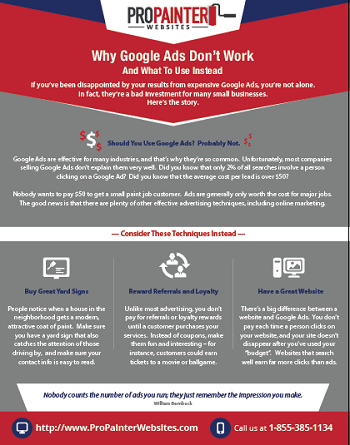Figure Out Just How Seasonal Elements Influence Business Outside Paint Success And Find The Best Times To Make Sure Long Lasting Results For Your Task
Figure Out Just How Seasonal Elements Influence Business Outside Paint Success And Find The Best Times To Make Sure Long Lasting Results For Your Task
Blog Article
Material Author-Fox Celik
When you're preparing a commercial outside paint job, seasonal variables can make or break your outcomes. You'll want to think about how temperature level and moisture impact paint application and drying out times. Selecting the ideal period can guarantee your paint sticks properly and lasts much longer. But which seasons are genuinely the best for this sort of job? Let's discover just click the up coming post that can influence your task's success.
The Effect of Temperature Level on Paint Application
When you're intending an industrial external painting project, the temperature can dramatically affect exactly how well the paint sticks and dries.
Preferably, you intend to repaint when temperatures vary between 50 ° F and 85 ° F. If it's too chilly, the paint might not heal correctly, causing problems like peeling off or fracturing.
On the other hand, if it's too hot, the paint can dry out too rapidly, avoiding correct bond and causing an unequal surface.
You ought to also consider the time of day; morning or late afternoon uses cooler temperature levels, which can be extra favorable.
Always check the manufacturer's recommendations for the certain paint you're using, as they commonly supply assistance on the suitable temperature variety for optimum outcomes.
Moisture and Its Impact on Drying Times
Temperature isn't the only ecological element that influences your industrial outside paint job; moisture plays a substantial function too. High humidity degrees can slow down drying out times dramatically, influencing the overall quality of your paint work.
When the air is saturated with wetness, the paint takes longer to treat, which can bring about issues like inadequate bond and a greater risk of mildew development. If you're painting on a particularly humid day, be prepared for extended delay times in between coats.
It's vital to check neighborhood weather conditions and strategy accordingly. Ideally, go for humidity degrees between 40% and 70% for ideal drying.
Maintaining how to be a good house painter consider mind ensures your task stays on track and delivers an enduring coating.
Best Seasons for Commercial Outside Paint Projects
What's the best season for your commercial external painting projects?
Spring and very early loss are normally your best bets. Throughout these seasons, temperatures are light, and moisture levels are usually lower, developing excellent problems for paint application and drying out.
Prevent summer's intense heat, which can create paint to dry too quickly, bring about bad bond and coating. Similarly, winter season's cool temperature levels can impede proper drying and healing, taking the chance of the durability of your paint job.
Aim for days with temperature levels in between 50 ° F and 85 ° F for optimal outcomes. Bear in mind to inspect the neighborhood weather report for rainfall, as damp conditions can spoil your task.
Planning around these elements guarantees your painting job runs efficiently and lasts longer.
Verdict
In conclusion, planning your industrial exterior painting jobs around seasonal considerations can make a substantial difference in the result. By organizing job during the ideal temperatures and humidity levels, you'll make sure better bond and drying times. Remember to watch on neighborhood weather forecasts and select the right time of year-- springtime and very early fall are your best bets. Taking these steps will certainly help you accomplish a sturdy and professional surface that lasts.
